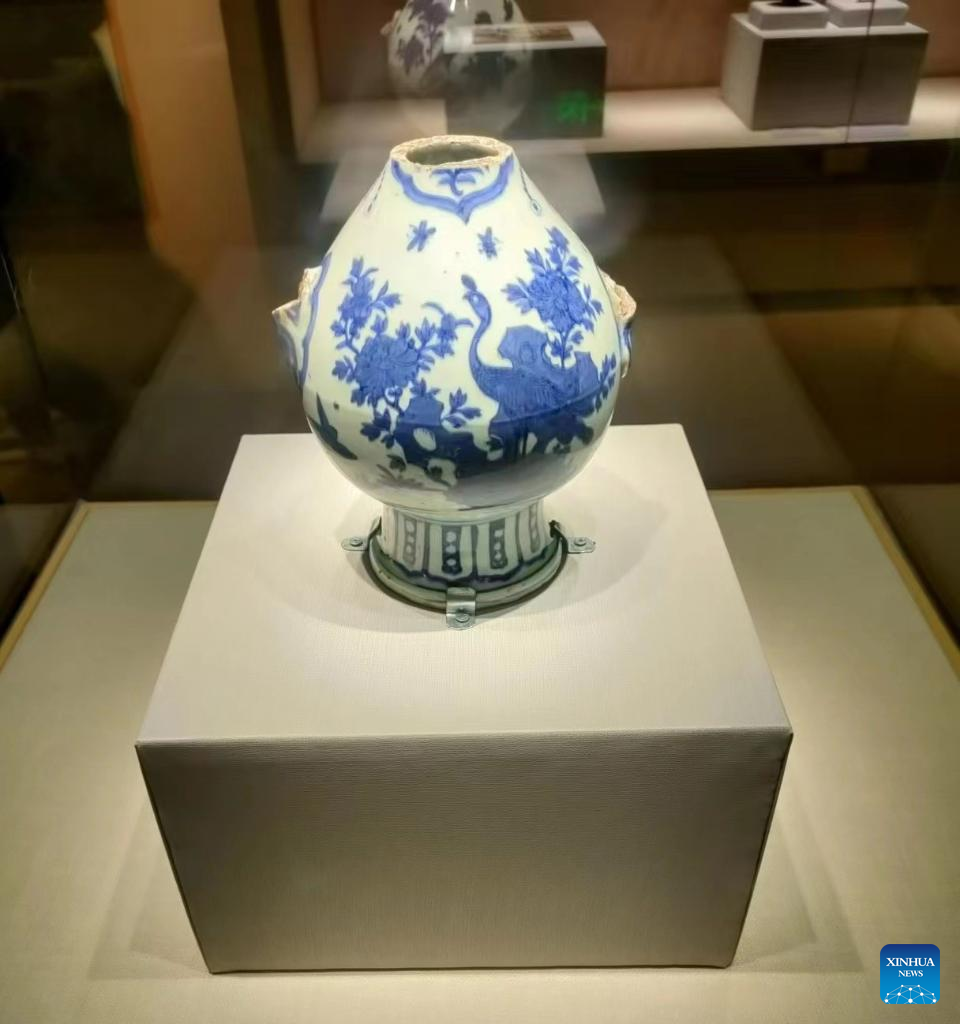
This photo taken on Nov. 22, 2023 shows a ceramic bottle at a Syrian heritage exhibition in Yinchuan, northwest China's Ningxia Hui Autonomous Region. Dating to the Mamluk Period (1250-1517), the ceramic bottle was made by artisans using Chinese techniques.(Xinhua/Wu Qiang)
YINCHUAN, Dec. 1 (Xinhua) -- A blue-and-white porcelain bottle from Syria reminds the audience at a northwestern Chinese museum of the active civilizational exchanges along the ancient Silk Road.
Dating to the Mamluk Period (1250-1517), the ceramic bottle was made by local artisans using Chinese techniques. It has pictures of a peacock, flowers and trees drawn in clear Chinese painting styles.
The bottle is strikingly similar in design to a Chinese counterpart at the Ningxia Museum: a brown glazed ceramic vase with flower patterns dating to the Western Xia Dynasty (1038-1227) and discovered in the Ningxia Hui Autonomous Region.
"The closeness of these ancient ceramics in Syria and Ningxia is one example of close exchanges between China and the West Asian region up to the Mediterranean in ancient times," said Wang Yi, head of the display department of the Ningxia Museum.
"Many relics unearthed here have also been proven to be imports from Persia, Iraq and Syria, and even the Eastern Roman Empire," said Wang.
At a parallel exhibition of ancient Ningxia heritage at the museum, one can see a long-necked glass bottle and a glass hanging bottle, believed to have been imported from West Asia during the Sui and Tang dynasties (581-907).
"The earliest glass relic unearthed in Ningxia is a 6th-century glass plate from Persia," Wang said.
A total of 97 pieces or sets of cultural relics from Syria, including stoneware, bronzeware and statues, are currently on display at the Ningxia Museum in Yinchuan, capital of Ningxia. Several cultural relics unearthed in Ningxia are also displayed to shed light on the cultural and trade exchanges between China and Syria in history.
"China and Syria enjoy a long history of friendly exchanges. This exhibition provides an important window through which visitors can appreciate the splendid history and civilization of Syria up close, and experience the exchanges and mutual learning between the two civilizations," said Tan Ping, director of Art Exhibitions China, which co-hosted the exhibition with the Ningxia regional government.
Su Xiaomei, a local historian with the Guyuan Museum of Ningxia, whose relics are also on display at the Ningxia Museum, said, "This exhibition also offers a chance to hold dialogue on the role of the Silk Road in building over 2,000 years of exchanges between the people of China and Syria, which is more significant considering the Belt and Road Initiative of modern time." ■



